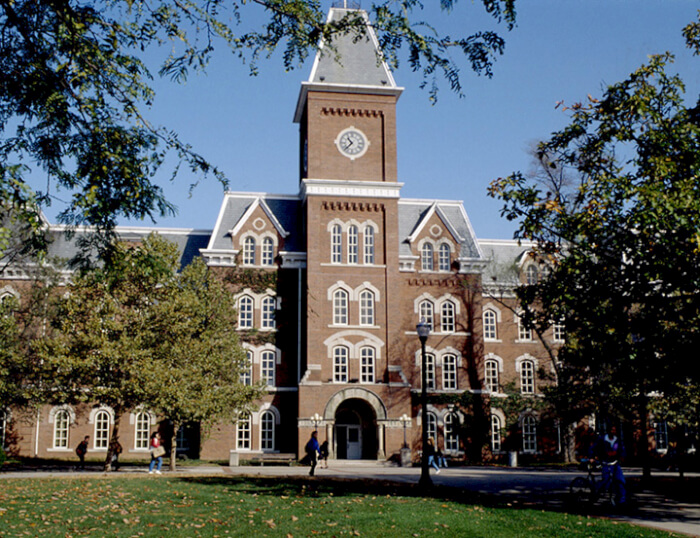Free Paint Program In Cleveland Ohio
lead paint
City and county officials are looking for people who qualify for lead remediation grants.
(LONNIE TIMMONS III, The Plain Dealer, File, 2000)
City of Cleveland Paint Program. Program of the Ohio Department of Development to help low-income Ohio residents to improve the energy efficiency of their homes. Contact program Name of Program: Free Radon Tests Agency: Ohio Department of Health, Indoor Radon Program Description: Free radon tests. Radon is a colorless, odorless radioactive gas that forms when naturally occuring uranium decays. Radon gas is commonly found in rocks and soil and it enters homes through holes and cracks in the. Neighborhood Historic Preservation and Heritage Home Programs. P: 216.426.1000 - 3751 Prospect Ave., Cleveland, OH 44115 Cleveland Restoration Website. These programs are administered by the Cleveland Restoration Society. The loans are not subject to income guidelines and can be used for owner-occupied as well as non-owner occupied homes.

CLEVELAND, Ohio - City and county officials have millions to spend in the next three years to make homes lead safe for children.
So far, though, the city department that distributes the grants is processing only about 30 applications.
Of those, a dozen are ready to be assigned to contractors who will remediate lead hazards, Interim Community Development Director Michael Cosgrove said during a city council hearing last week.
Cosgrove said the city hopes to finish 47 homes or apartments by the end of 2016 and then step up the process to finish about 220 homes.
Cosgrove said the program provides help, in the form of grants, to families that meet certainly income eligibility requirements. That includes both tenant and owner occupied homes, he said.
To qualify for a grant, it is NOT required that a property already be identified as a lead hazard. However, there are requirements based on the income of the homeowners or tenants and the age of children who live or spend time in the home.
Click here for a brief survey to see if you might qualify and here for the application for Cleveland's grants or call (216) 664-4021. (The information is also below in a document viewer.)
If you live in Cuyahoga County, find information here.
The Cuyahoga County Board of Health has about $3.3 million to spend to remediate lead in the following suburbs: Bratenahl, Brooklyn, Brooklyn Heights, Brook Park,Cuyahoga Heights, East Cleveland, Euclid, Fairview Park, Garfield Heights, Lakewood, Linndale, Maple Heights, Newburgh Heights, Parma,Rocky River, Shaker Hts., South Euclid and Warrensville Heights.
Working on a few hundred homes per federal grant, the city and county have helped cleaned up roughly 4,300 homes since 1993.
Roughly 187,000 homes in Cuyahoga County are thought to be potential lead hazards because they were built before 1978, when lead-based paint was banned from residential use.
However, environmental officials stress that not all homes with lead-based paint are considered hazardous. The paint becomes a problem when it isn't maintained and is allowed to flake, chip or deteriorate into lead dust that can be ingested by babies and toddlers.
Previously, Cleveland had trouble moving homes through its pipeline from application to remediation.
In 2012, the city lost $2 million in HUD funding for lead hazards because of a failure to efficiently carry out home assessment and abatement work. At the time, HUD demanded the city transfer management of the program from the Department of Public Health to the Community Development Department in order to keep a remaining $1.1 million in funding.
The city was denied a new grant in 2013, the first time Cleveland had been without lead abatement funding since 1995. When that happened, the county health department stepped in, using some of its grant money to assist Cleveland residents.
In September the city was awarded the grant it is using currently to fix homes
More than 13,700 children under 6 were screened for lead in 2014, and about 1,885 had levels higher than the Centers for Disease Control and Prevention's threshold of 5 micrograms per deciliter of blood. More than 493 children had lead levels higher than 10 micrograms per deciliter, and 52 children had levels higher than 25 micrograms per deciliter.
Cleveland, however, lags in screening children for lead.
Only between 20 and 30 percent of children under 6 who should be screened each year get the blood tests.

Despite the dismal screening rates, city health officials identified more than 500 homes since 2010 that did pose a hazard to children, and not all of them have been fixed.
Housing Court Judge Ray Pianka's staff is working to refer homeowners who might benefit from the program.
Last week, the court sent letters to 15 property owners who, because of housing code violations, have to answer to court probation officers.
Free Paint Program In Houston
The letter, which can be viewed here, noted that the homes were on a list of more than 500 that identified as lead hazards by city investigators in recent years. A Plain Dealer analysis of city records revealed those homes hadn't been fixed.
City health officials also sent out information to residents and owners of 157 homes that state data showed were identified in the previous decade as associated with poisoning multiple children.
The packets, city health officials said, included information on reducing lead hazards and how to apply for the federal grants.
Applications can be mailed to: City of Cleveland Lead Hazard Control Program, 601 Lakeside Ave, Room 302, Cleveland, OH 44114
